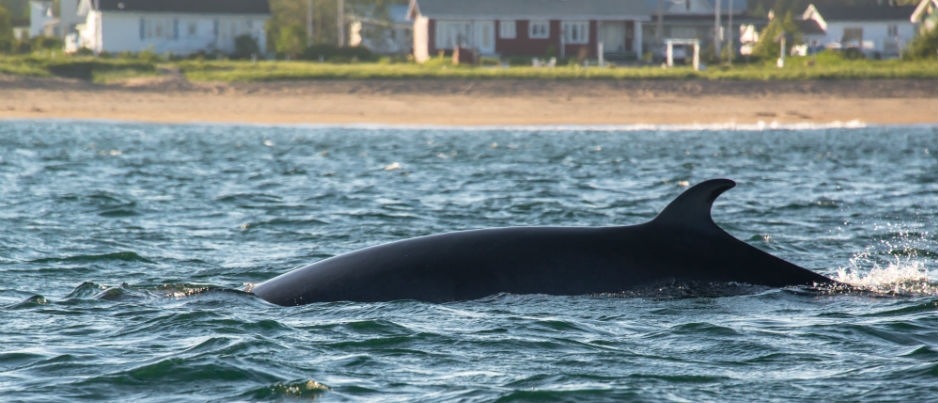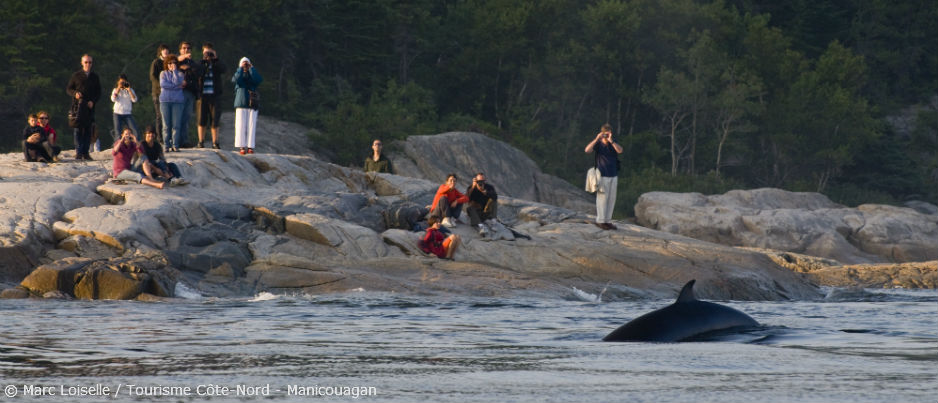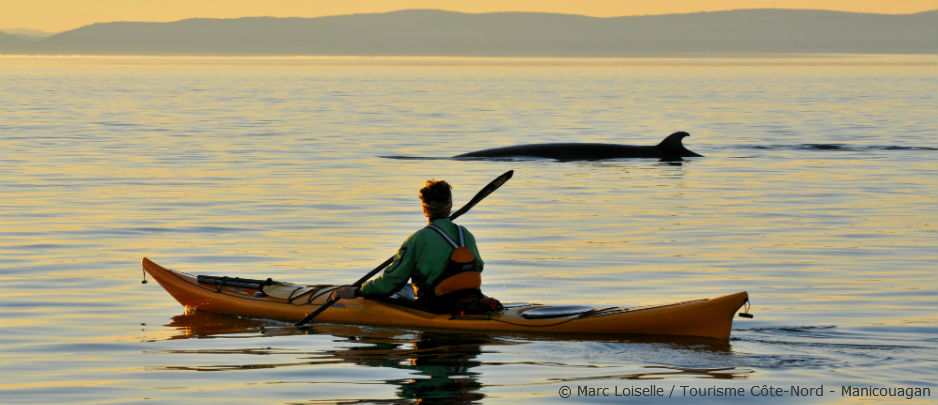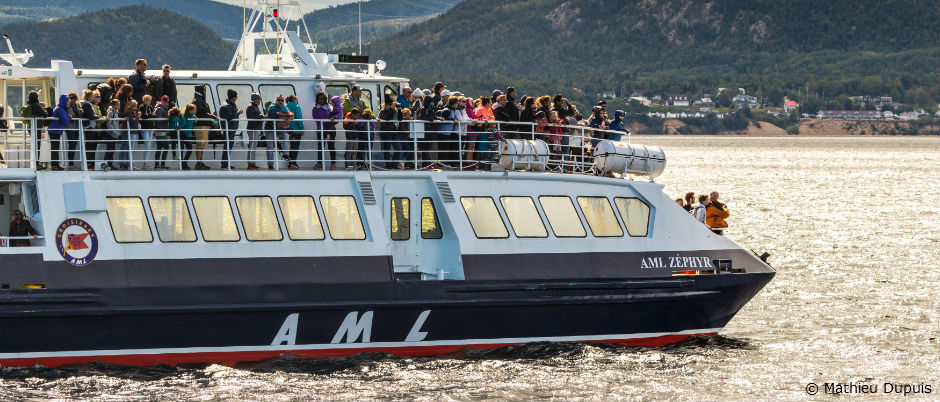The Québec maritime Blog

- Optik 360/Tourisme Côte-Nord
Responsible Whale-Watching Tips
The powerful sound of a whale blowing. A long and smooth body that emerges slowly from the water, followed by a small fin on a huge back. Watching marine mammals is an enchanting experience but can also raise public awareness of conservation issues. It’s thanks to the first whale I caught sight of at the age of 8 that I now work for the Group for Research and Education on Marine Mammals (GREMM). However, as with any activity involving wildlife observation, our proximity can also harm the animals we love so much. So how can you engage in responsible whale watching? You have several options, both from land and from the water.
Whale watching from land

The unique topography of the St. Lawrence makes it possible to observe whales from the shore. There are very few places on earth where whales come as close to the coast as they do in Haute-Côte-Nord, where minke whales, fin whales, harbour porpoises, belugas, humpbacks and even blue whales can be seen from land with the naked eye. In Gaspésie, Forillon National Park offers several vantage points from which you can spot baleen whales. In Bas-Saint-Laurent, belugas can be observed from the shore in both Cacouna and Rivière-du-Loup.
Land-based observation has the advantage of having no impact on the whales: they’re neither stressed nor disturbed by the presence of boats or humans. It’s also an opportunity to enjoy other activities, such as hiking, photography, camping or contemplation. Some sites in both Côte-Nord and Gaspésie offer nature interpretation so you can learn more about the whales and how to identify them. From the shore you can also observe seabirds, seals and land-based wildlife!
Whale watching from the water
If you’re hearing the call of the sea, you can go whale watching in your own vessel or participate in a cruise. All crafts (including sea kayaks and paddleboards), whether operated by you or a company, must follow the rules and regulations regarding encounters with marine mammals. The purpose of these measures is to minimize the impact of observation activities: complying with them is a good step in the direction of responsible whale watching.
Using your own vessel

If you plan to go whale watching in your own sea kayak, sailboat or yacht, consider becoming familiar with Fisheries and Oceans Canada’s Marine Mammal Regulations, which apply to the whole country, as well as to the regulations in effect in the Saguenay–St. Lawrence Marine Park, if you’re visiting Côte-Nord. In the meantime, here are some general rules to keep in mind if you encounter a whale:
- Like seals, whales are wild animals, and their behaviour is therefore unpredictable. For your safety and theirs, make sure you always keep a good distance from them.
- If you’re observing a group of marine mammals, try to maneuver around them so you don’t isolate a single animal from the group.
- Does one of the animals you’re watching seem smaller than the other? You’re probably observing a mother and her calf. Keep your distance even more, to reduce stress on the pair and give the calf every chance of a long life.
- Is a curious whale approaching you? It may be setting aside essential activities to observe a vessel. If you can, move away slowly so it will resume whatever it was doing.
Whale-watching cruises

A whale-watching cruise provides a great opportunity to learn about respecting marine mammals. But how should you choose which cruise to go on? Look for one where you’ll be accompanied by a naturalist guide. These types of excursions are offered in Bas-Saint-Laurent, Gaspésie and Côte-Nord! The guide will be able to answer your questions and provide information about the species you’re seeing. This may also inspire you to work towards better protecting the marine environment, which is so essential to whales.
Should you choose a Zodiac or sightseeing boat for your cruise? There are pros and cons to both. Zodiacs are smaller, but larger boats reduce the number of vessels on the water. Sailboats and kayaks make very little noise and don’t leak fuel into the water, but their rapidly changing trajectories may stress the animals.
Want to make the most of your experience? Research groups such as the Mériscope or the Mingan Island Cetacean Study (MICS) offer weeklong internships with their teams. You can learn more about marine biology while participating in sea excursions and supporting scientific research.
Some of the companies that operate in the Saguenay–St. Lawrence Marine Park are members of the Eco-Whale Alliance, which is made up of organizations and companies whose practices exceed applicable laws and regulations. Members also support research and education on marine mammals by contributing part of their profits to the Eco-Whale Fund.
Finally, the more you know about whales before you go whale watching, the more you’ll get out of your experience. So be sure to visit museums, read books and magazines, watch documentaries, etc. You’ll then be ready to soak up the beauty of these majestic animals!
Happy whale watching!

(0) comment